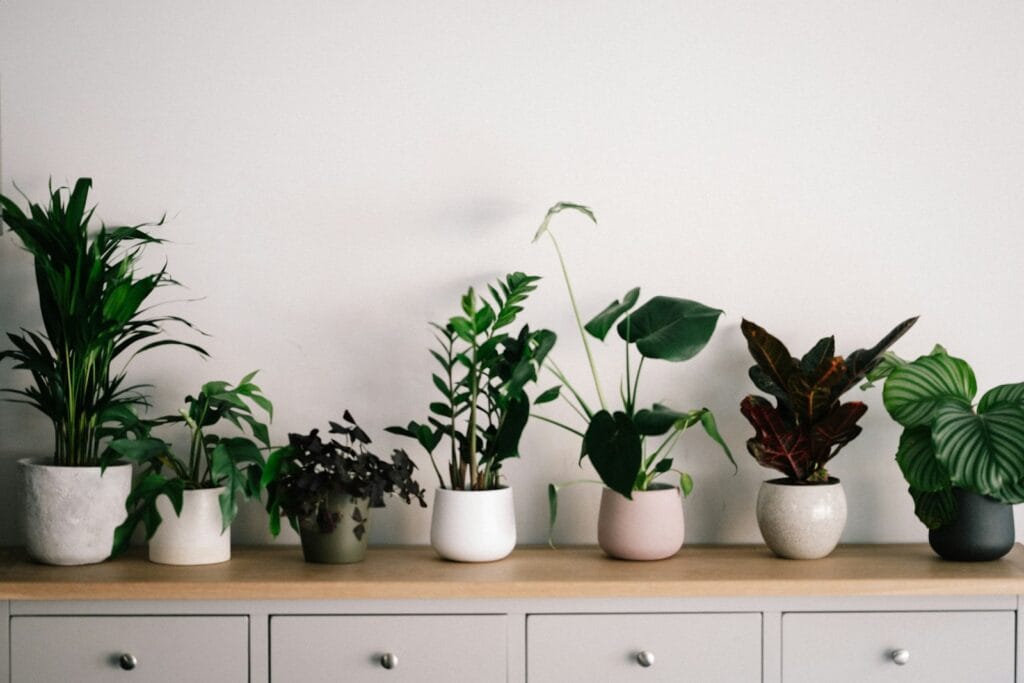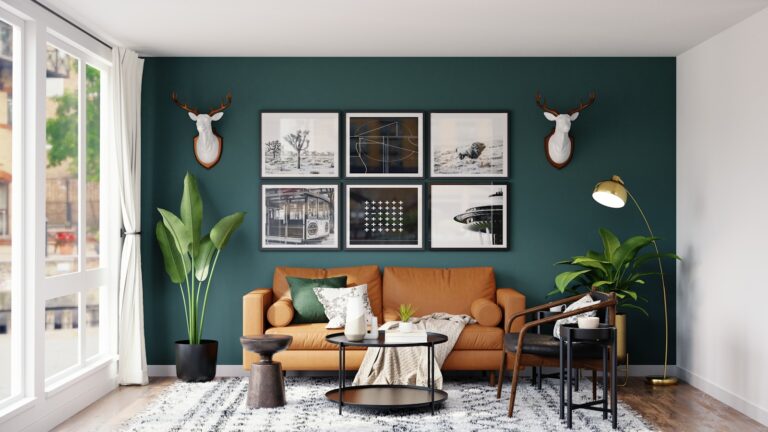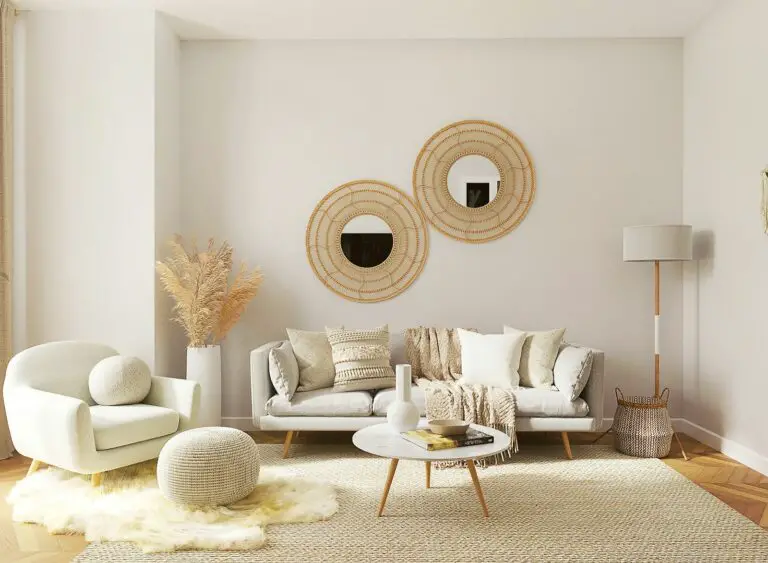Getting into houseplants doesn’t have to be stressful or pricey. A lot of new plant owners worry about killing their first green friends, but honestly, picking the right ones makes it way easier.
The best houseplants for beginners are low-maintenance plants that are resilient, forgiving, and thrive with minimal care even if you forget to water or your place isn’t super bright. These tough plants can handle dorm rooms, offices, or those dim corners that never seem to get enough sun.
Here’s a rundown of the easiest starter plants, how to match them to your space, what supplies you’ll actually need, and some tips for handling issues. You’ll see which plants fit a busy lifestyle and how to set up a good environment for them to do their thing.
Top Easy-Care Houseplants for Beginners
These four plants don’t need much water, put up with low light, and can bounce back from common mistakes like overwatering or skipping a week.
Snake Plant
Snake plants are some of the most resilient houseplants for beginners. Their upright, thick leaves with green and yellow patterns look pretty cool, honestly.
You only need to water them every 2 or 3 weeks. Let the soil dry out all the way between waterings. Too much water is about the only thing that’ll knock them out.
Light Requirements:
- Prefers bright, indirect light
- Can survive in low light
- Don’t put it in direct sun
Snake plants grow slowly indoors, usually hitting 2 to 4 feet. They’ll make little baby plants called pups that you can split off and pot up.
They’re also known for cleaning indoor air and actually release oxygen at night, which is kind of neat.
Bird of Paradise
Bird of paradise brings a tropical vibe with its big, paddle-shaped leaves. Young plants are easy to keep indoors and can get up to 6 or 8 feet tall.
Put yours near a bright window with indirect sunlight. It really wants at least 6 hours of light a day to stay happy.
Watering Schedule:
- Water when the top inch of soil is dry
- Cut back on watering in winter
- Use water that’s room temperature
If the air’s too dry, the leaves might get crispy brown edges. You can boost humidity with a water tray or a humidifier.
Bird of paradise plants are known for being forgiving if you forget to water sometimes. Their thick stems store water for dry spells.
Dracaena Fragrans
Dracaena fragrans, or corn plant, has long green leaves with yellow stripes and grows on thick, woody stems that look a bit like mini tree trunks.
It likes bright, indirect light but will manage in shadier spots too. Direct sun can burn the leaves, so keep it out of harsh rays.
Water when the top 2 inches of soil are dry. Always empty the drainage tray after about 30 minutes so the roots don’t sit in water.
Care Tips:
- Temperature: 65-75°F is ideal
- Humidity: Normal home levels are fine
- Fertilizer: Once a month in spring and summer
Dracaena fragrans can reach 4-6 feet indoors and will grow extra stems over time. You can trim them back to keep the plant bushy or short.
ZZ Plant
ZZ plants are super easy. Their glossy, dark green leaves catch the light and brighten up any room. The thick stems and waxy leaves store water, making these one of the easiest indoor plants to own.
Water every 2-4 weeks, depending on how warm or dry your place is. ZZ plants barely notice if you forget to water for a while.
They’ll grow in spots with barely any light and don’t mind fluorescent office lights either.
Growth Info:
- Height: 2-3 feet indoors
- Grows very slowly
- Can be propagated by leaf cuttings or division
The plant’s underground rhizomes store water and nutrients, so it handles neglect better than most.
Choosing Houseplants for Your Environment
The conditions in your home make a big difference in which plants will thrive. Light, humidity, temperature, and space all matter.
Light Requirements
Houseplants usually fall into three main light needs. Low-light plants like snake plants and pothos can make it in rooms with little sunlight. Medium-light plants, such as rubber trees, want bright, indirect light from east or west windows. High-light plants need several hours of direct sun.
Check your room’s light before you buy. North windows get the least light. South windows are the brightest. East and west are somewhere in the middle, with sun in the morning or afternoon.
If your place is dark, you can use artificial grow lights. LEDs work well and don’t use much energy. Set them 12-24 inches above your plants, depending on how much light the plant likes.
If your plant needs more light, you might notice:
- It stretches toward windows
- Leaves turn pale or yellow
- Growth slows down
- Leaves drop off more than usual
Humidity and Temperature
Indoor air is usually drier than most tropical plants want. Most homes stay at 30-50% humidity, but many plants like 50-60%.
To bump up humidity:
- Group plants together to create a mini climate
- Put pebble trays with water under pots
- Use a humidifier, especially in winter
- Lightly mist leaves (but skip this for fuzzy-leafed plants)
Plants care more about stable temps than hitting a perfect number. Most do best between 65-75°F during the day. Night temps can drop by 5-10 degrees and they’ll still be fine.
Don’t put plants right by heating vents, AC units, or drafty windows. Those spots cause temperature swings that stress plants out. Keep them away from doors that open a lot in winter, too.
Space Considerations
Measure your space before picking plants. Small spaces are great for compact plants like snake plants or pothos. Big rooms can handle larger plants like fiddle leaf figs or monstera.
Think about how big the plant will get, not just how it looks now. Some start small but end up several feet tall and wide. Low-maintenance houseplants for beginners usually have predictable growth.
Consider where you’ll put them:
- Floor for big pots
- Shelves or tables for medium ones
- Hanging spots for trailing plants
- Make sure you can reach them to water
Give plants some room for air flow. Crowded plants are more likely to get pests or fungus. Plan ahead for growth and pick the right size containers and spots.
Essential Houseplant Supplies and Plant Care Basics
Having the right supplies and understanding basic care really helps. Good soil, proper watering, balanced fertilizer, and knowing when to repot are all key.
Soil Mixes and Potting
Most houseplants want a potting mix that drains well but holds a bit of moisture. Don’t use regular garden dirt—it’s too heavy and can kill your plants.
Look for potting mixes made for indoor plants. These usually have peat moss, vermiculite, and perlite (the white chunky bits that help with drainage).
Different plants like different soils:
- Succulents and cacti: Need fast-draining cactus mix
- Tropical plants: Standard potting mix works
- Orchids: Need special orchid bark
You can buy mixes or make your own. A simple recipe is 2 parts potting soil, 1 part perlite, and 1 part peat moss.
Never use soil from your yard. It’s too dense and might bring in bugs or diseases.
Watering Techniques
Always check the soil before watering. Stick your finger 1-2 inches in. If it’s dry, go ahead and water.
Most plants die from too much water, not too little. Overwatering leads to root rot, which is hard to fix.
Water slowly until it drains out the bottom. Dump out any water in the saucer after 30 minutes so roots aren’t sitting in it.
How often you water depends on:
- The type of plant
- Pot size
- Room temperature
- Season
Most houseplants need water every 1-2 weeks. Succulents might only want it once a month.
Use room temperature water. Cold water can shock roots. Let tap water sit overnight so chlorine can evaporate.
Houseplant Fertilizer
Plants need nutrients to grow well. Indoor plants need feeding because potting soil runs out of nutrients over time.
Liquid fertilizer is easiest for most people. Just mix it with water and feed your plants. Use a balanced formula (like 10-10-10).
Feed houseplants every 2-4 weeks in spring and summer. Stop in fall and winter when they slow down.
Slow-release granules last longer but cost more upfront. Sprinkle them on top of the soil and water as usual. They’ll keep feeding for months.
If your plant’s leaves look pale, growth is slow, or leaves are dropping, it might need fertilizer. But yellow leaves can also mean you’ve overdone it.
Always dilute liquid fertilizer to half strength. It’s safer to feed lightly and often than risk burning the roots.
Repotting Tips
Most houseplants need a bigger pot every year or two. If you see roots poking out the drainage holes, water running straight through, or the plant is too big for its pot, it’s time.
Pick a new pot just 1-2 inches wider than the old one. Too big, and you risk root problems.
Spring is the best time to repot since plants are starting to grow again. Try not to repot in winter when they’re resting.
How to repot:
- Water the plant a day or two before
- Gently take it out of the old pot
- Loosen any roots circling the bottom
- Add fresh soil to the new pot
- Place the plant and fill in around it
- Water lightly
Wait 4-6 weeks before fertilizing after repotting. Fresh soil has enough nutrients, and the roots need time to adjust.
Common Challenges and How to Overcome Them
New plant owners usually run into three main problems: overwatering, pests and diseases, and basic care mistakes. These can kill plants fast, but they’re easy to avoid once you know what to look for.
Avoiding Overwatering
Overwatering is the number one killer of houseplants. Lots of beginners think plants need water every day, but that just drowns the roots.
Check the soil before you water. Stick your finger in about an inch. If it’s still damp, wait another day or two. Only water when it feels dry.
Most houseplants are happy with water once a week. Succulents might only need it every two weeks. Ferns and a few others might want it twice a week.
Always use pots with drainage holes. Water should drip out the bottom. Dump out any water that collects in the saucer after half an hour.
Water deeply but not too often. Let the water run out the bottom so roots grow strong and deep.
Look out for common houseplant mistakes like yellow leaves or mushy stems—those usually mean too much water.
Recognizing Pests and Diseases
Bugs and plant diseases can spread quickly if you don’t catch them. Take a look at your plants once a week.
Watch out for these pests:
- Spider mites: Tiny red or brown dots on leaves
- Aphids: Small green or black bugs on new growth
- Scale insects: Brown bumps on stems and leaves
- Fungus gnats: Little flies near the soil
Check both sides of the leaves. Pests love to hide underneath. Look for sticky stuff, webbing, or tiny moving dots.
Treat pests right away. Wipe leaves with a damp cloth. Use insecticidal soap or neem oil. Keep sick plants away from healthy ones.
Fungal diseases show up as brown spots, fuzzy mold, or rotting stems. These usually happen if plants stay too wet or don’t get enough air.
Cut off sick leaves and stems with clean scissors. Give your plants more space for air flow.
Mistakes to Avoid for Beginners
First-time plant parents usually trip up on some common things. Figuring out what not to do can really save your plants—and your wallet.
Don’t repot right away. Give new plants a chance to settle in before you mess with their pots. At least a month is a safe bet. If you move them too soon, they might freak out a little.
Don’t put plants in dark corners. Most houseplants are happier with bright, indirect light. Tucking them away in a dim spot? That just leads to flimsy stems and yellow leaves.
Don’t use garden soil indoors. Outdoor dirt is just too dense and doesn’t drain well inside. Go for a potting mix made for houseplants. It makes a difference.
Don’t ignore plant labels. Every plant is a bit different when it comes to water, light, and humidity. Those care tags aren’t just for show—give them a quick read.
Being patient with plants really does pay off. Sometimes they just need a few weeks to get used to their new digs, and they might look a bit off at first.




